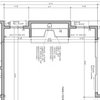dumb question about soil testing for engineered foundation
breakingground08
16 years ago
Related Stories

REMODELING GUIDESConsidering a Fixer-Upper? 15 Questions to Ask First
Learn about the hidden costs and treasures of older homes to avoid budget surprises and accidentally tossing valuable features
Full Story
GARDENING GUIDESHow to Stop Worrying and Start Loving Clay Soil
Clay has many more benefits than you might imagine
Full Story
FARM YOUR YARDHow to Get Good Soil for Your Edible Garden
The nutrients in your soil feed the plants that feed you. Here are tips on getting it right — just in time for planting season
Full Story
GARDENING GUIDES10 Solutions for Soggy Soil
If a too-wet garden is raining on your parade, try these water-loving plants and other ideas for handling all of that H2O
Full Story
GREEN BUILDINGWhat's LEED All About, Anyway?
If you're looking for a sustainable, energy-efficient home, look into LEED certification. Learn about the program and its rating system here
Full Story
WORKING WITH PROS9 Questions to Ask a Home Remodeler Before You Meet
Save time and effort by ruling out deal breakers with your contractor before an in-person session
Full Story
REMODELING GUIDESWhen to Use Engineered Wood Floors
See why an engineered wood floor could be your best choice (and no one will know but you)
Full Story
MOVINGHiring a Home Inspector? Ask These 10 Questions
How to make sure the pro who performs your home inspection is properly qualified and insured, so you can protect your big investment
Full Story
ARCHITECTUREThe Truth About 'Simple' Modern Details
They may look less costly and easier to create, but modern reveals, slab doors and more require an exacting hand
Full Story
MOST POPULARWhat to Know About Adding a Deck
Want to increase your living space outside? Learn the requirements, costs and other considerations for building a deck
Full StoryMore Discussions








sierraeast
kateskouros
Related Professionals
Panama City Beach Architects & Building Designers · West Palm Beach Architects & Building Designers · Boise Design-Build Firms · North Bellport Home Builders · Dinuba Home Builders · Bell General Contractors · Browns Mills General Contractors · Cape Girardeau General Contractors · Cumberland General Contractors · Erie General Contractors · Forest Hills General Contractors · Los Alamitos General Contractors · Rancho Santa Margarita General Contractors · Spanaway General Contractors · Palm River-Clair Mel General Contractorsbreakingground08Original Author
sierraeast
vancleaveterry
bevangel_i_h8_h0uzz
galore2112
chiroptera_mama
vancleaveterry
sierraeast
chiroptera_mama
sierraeast
chiroptera_mama
sierraeast
breakingground08Original Author
mightyanvil